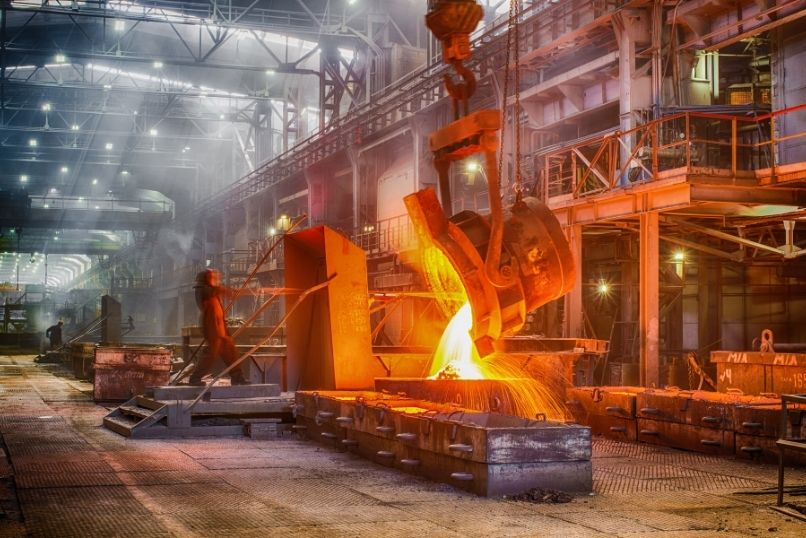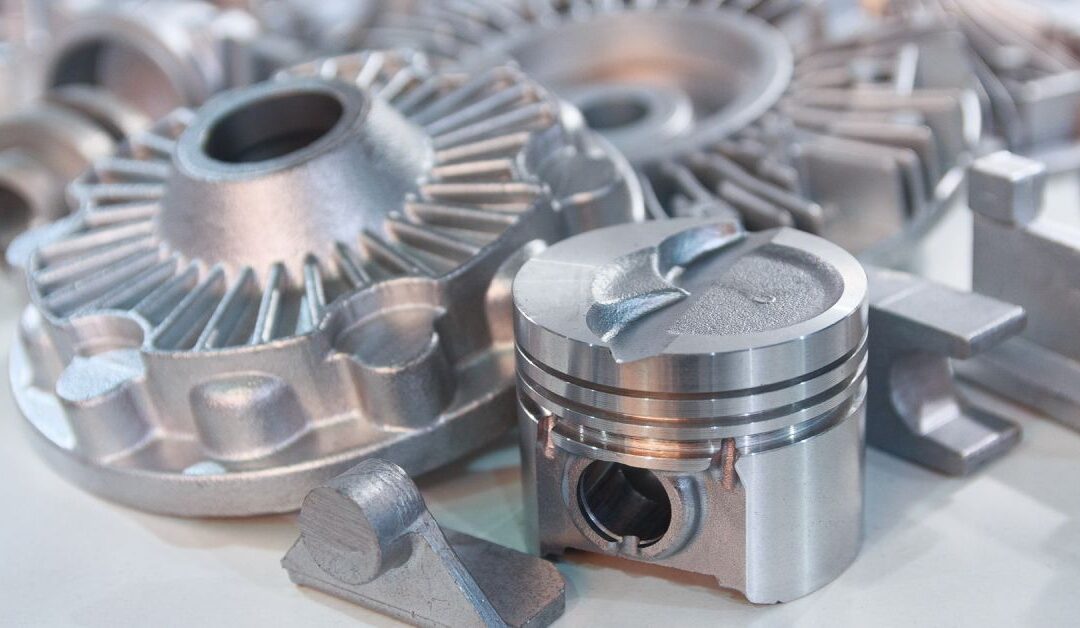The Function of Metal Casting in Progressing Production Technologies
Metal Casting have actually significantly affected the advancement of making technologies. They provide unique style flexibility, making it possible for the production of complex geometries essential for various applications. Modern casting techniques are being improved by innovations like 3D printing and automation. These growths not just enhance efficiency yet likewise address challenges in accuracy and sustainability. As sectors proceed to advance, the function of Metal Casting stays crucial fit their future. What lies ahead in this vibrant field?
The Development of Metal Casting Techniques
As the need for precision and efficiency in manufacturing has grown, the development of Metal Casting strategies has actually gone through considerable improvement. Historically, Metal Casting began with straightforward approaches such as sand casting and lost-wax casting, which permitted artisans to produce intricate forms. With time, improvements in modern technology introduced procedures like die casting and financial investment casting, boosting precision and minimizing waste. Wisconsin Aluminum Foundry. The introduction of computer-aided style (CAD) and simulation software reinvented the planning stages, enabling manufacturers to prepare for prospective concerns and maximize layouts before production. Additionally, the advancement of brand-new products, such as innovative alloys and composites, has widened the extent of applications for Metal Casting. Automation and robotics have additional refined spreading procedures, boosting consistency and effectiveness. Therefore, the Metal Casting market has adjusted to satisfy the needs of modern-day manufacturing, concentrating on sustainability and advancement to continue to be competitive in an ever-evolving market
Applications of Metal Casting in Trick Industries
The advancements in Metal Casting techniques have opened up a vast array of applications throughout numerous markets. In the automobile field, Metal Casting are important for producing engine blocks, transmission real estates, and various other essential components that require high stamina and longevity. The aerospace market utilizes castings for intricate components like wind turbine blades and structural components, making sure lightweight yet robust remedies for airplane.

The construction market utilizes Metal Casting for architectural components such as installations and light beams, adding to the stability of buildings and facilities. In the power market, spreadings play a vital duty in producing parts for wind turbines and power generation devices, improving effectiveness and dependability. On top of that, the medical area gain from precision castings utilized in medical tools and prosthetics, showing the flexibility of Metal Casting across diverse applications. This wide use highlights the value of Metal Casting in modern-day production practices.
Advantages of Metal Casting in Modern Manufacturing
Metal Casting supply countless advantages that considerably enhance modern production procedures. One vital advantage is style adaptability; Metal Casting enables the development of complex forms and intricate geometries that are difficult or typically tough to accomplish with other manufacturing methods. This capacity enables suppliers to maximize product layouts for capability and performance.
Furthermore, Metal Casting can support a large range of materials, including iron, steel, and aluminum, which can be customized to satisfy specific mechanical properties and rust resistance requirements.

Cost-effectiveness is one more notable benefit; click to investigate Metal Casting processes can create huge amounts of get rid of minimal product waste, thus decreasing manufacturing costs.
The sturdiness of cast metal elements adds to the long life of products, decreasing the requirement for constant replacements. In general, the benefits of Metal Casting considerably add to effectiveness, sustainability, and innovation within modern production environments.
Developments Driving the Future of Metal Casting
While typical Metal Casting strategies have actually offered the market well for years, current advancements are positioned to transform the field. Developments such as 3D printing technology permit for rapid prototyping and the manufacturing of complex geometries that were previously unattainable. These developments not only improve design versatility yet also lower waste and shorten lead times. Furthermore, the assimilation of automation and robotics in casting procedures is improving operations, enhancing precision, and boosting employee safety. Furthermore, the development of composite products and new alloys is making it possible for the creation of stronger, lighter castings customized for certain applications. Digital technologies, including expert system and artificial intelligence, are optimizing casting specifications and anticipating maintenance, driving better quality assurance. Collectively, these innovations are pushing the limits of Metal Casting, cultivating higher performance and sustainability have a peek here in manufacturing, and positioning the industry for future development and competition.
Challenges and Solutions in Metal Casting Processes
As advancements in Metal Casting modern technology continue to improve the industry, different challenges stay that suppliers have to resolve to completely take advantage of these technologies. One substantial problem is the variability in product buildings, which can lead to irregular high quality and performance. This irregularity frequently arises from variations in resources and processing problems. Additionally, the climbing prices of energy and products position financial restrictions, pushing makers to look for extra effective procedures.
To deal with these challenges, business are significantly taking on automated systems and advanced simulation strategies to boost precision and uniformity. Applying top quality control procedures throughout the production procedure additionally aids in detecting problems early. Spending in research study for alternate materials might improve and lower expenses sustainability. By addressing these difficulties with ingenious solutions, the Metal Casting sector can boost productivity and preserve competitiveness in the developing production landscape.
Regularly Asked Concerns
What Products Are Frequently Used in Metal Casting Procedures?
Typical products made use of in Metal Casting processes consist of aluminum, bronze, magnesium, and iron. Each material possesses distinct homes that provide to various applications, enhancing the adaptability and functionality of the last actors items in various markets.
How Do Ecological Laws Impact Metal Casting Operations?
Environmental policies urge Metal Casting procedures to adopt cleaner technologies and methods, commonly raising manufacturing expenses. Conformity might bring about cutting-edge procedures that decrease waste and discharges, inevitably advertising sustainability within Look At This the Metal Casting industry.
What Are the Precaution in Metal Casting Facilities?
Security actions in Metal Casting facilities include proper ventilation, personal safety tools, normal safety and security training, devices upkeep, and adherence to safety and security guidelines, guaranteeing a secure environment for employees while minimizing dangers related to hazardous materials and processes.
Exactly How Is Quality Controlled in the Metal Casting Process?
Quality control in Metal Casting entails rigorous examinations, including visual analyses, dimensional checks, and material testing. Adherence to market standards and applying top quality monitoring systems assures that spreadings fulfill given needs throughout the manufacturing procedure.
What Is the Future Task Overview for Metal Casting Professionals?
The future work expectation for Metal Casting experts shows up promising, driven by advancements in technology and increasing need throughout various sectors (Wisconsin Aluminum Foundry). Development in automation and sustainable methods will likely develop new possibilities in this industry
Historically, Metal Casting started with basic approaches such as sand casting and lost-wax spreading, which allowed craftsmens to produce elaborate shapes. Over time, innovations in modern technology introduced processes like die spreading and financial investment casting, enhancing precision and minimizing waste. In addition, the clinical area benefits from precision spreadings utilized in medical instruments and prosthetics, demonstrating the convenience of Metal Casting across diverse applications. Metal Casting use various advantages that significantly improve modern manufacturing procedures. Typical products made use of in Metal Casting procedures include light weight aluminum, magnesium, iron, and bronze.